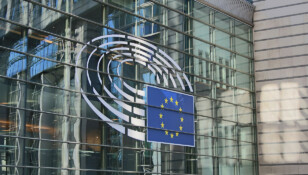On 1 January 2021, when the common EU VAT area comes into force, a provisional arrangement that has existed – with occasional adjustments – since the creation of the European single market in 1993 will end. After more than a quarter of a century, the Commission’s reform proposal is intended to make the confusing and exceptional VAT system in the EU simpler, more robust and more fraud-proof.
The new rules reflect technological advances, business models, and the economy’s globalisation. And they are intended to put money into the tax collector’s office. The Commission estimates that EU countries lost around €150 million yearly in tax revenue before the reform.
The most important changes in 2021 at a glance:
1) Operators of sales platforms, marketplaces, and the like will be included in the supply chain and subject to VAT. Even if the platform operator acts as an intermediary between a supplier and a recipient, he will be treated (for tax purposes, this is a fiction) as if he had received the supply and then carried it out himself. The fiction means that there are two deliveries for VAT purposes.
2) VAT will be applied to cross-border trade between companies. Until now, this type of trade has been exempt from VAT. In this way, the Commission wants to prevent companies from collecting VAT without transferring it to the state.
3) With the One-Stop-Shop (OSS), the EU is creating a central contact point that will make it easier for companies operating across borders to meet their VAT obligations. The member states then pass on VAT to each other, which is already applied to electronic services.
4) The delivery thresholds, which vary from one EU country to another, will be abolished. In the case of cross-border distance sales, VAT is generally due in the member state of the end consumer. Previously, this was only the case if different EU-wide delivery thresholds were exceeded. A uniform EU-wide threshold will now replace them. Suppose the volume of supplies by a supplier to private customers in another EU country is less than EUR 10,000 per year. In that case, the place of taxation will remain the country where the entrepreneur is established.
5) The tax exemption for imports of small consignments of up to 22 euros from non-EU countries will no longer apply. The place of performance is now the member state of the consumer. This means that the supply is taxed as a domestic supply, and no import VAT (EUSt) is due for import.
6) There are two options for the taxation of import shipments with a value of up to EUR 150 from a non-EU country: The supplier can use the contact point Import-OSS for the VAT declaration; the goods are then exempt from EUSt. Or he can use a simplified procedure to declare or register the EUSt, in which case the responsibility is shifted to the postal service providers.







